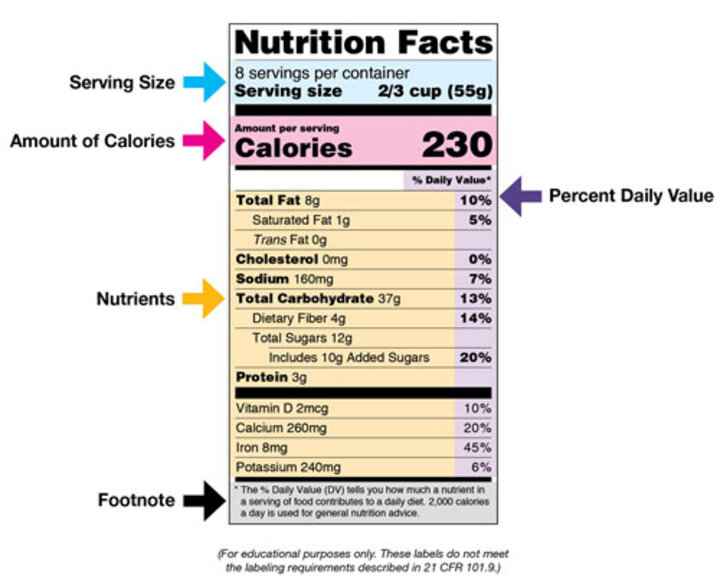
When the Food and Drug Administration (FDA) approved to update parts of the Nutrition Facts label, food manufacturers have been slowly changing their packaging to the new label. The original and newer labels appear different. Although the purpose of these labels has remained the same, understanding how they have changed can better help consumers make food choices that fit their needs.
What does a Nutrition Facts label do?
A Nutrition Facts label lists the nutritional content, the serving size, and the calories for a recommended serving of a food product. This helps consumers make the best decision on how much to eat, maybe when they want to eat this food, or how they can better balance their food choices throughout the day. In addition to the Nutrition Facts label, there is also an ingredients label. This lists all ingredients in the food product from the largest amount at the beginning to the smallest amounts of ingredients at the end. This is where consumers can find information about what is in their food, such as allergies or if a product is a whole grain item, for example.
What has changed with the new label?

Formatting Changes: One of the more noticeable changes to the newest label design is how it looks. Notice how the calorie amount is bolded and has a larger font. Information about the amount of calories from fat has been removed in the new label in addition to slight adjustment to how serving sizes are displayed. The new label now has the recommended serving size in bold font with the packaging's total serving sizes listed above it.
Another change is a label may have dual columns. A dual column nutrition label is used for food items that have multiple servings per container, but have the potential to eat the whole container's-worth in one sitting. This dual column will show the nutrients and calories for a single, recommended serving but also list the information for if someone were to consume the whole container. This allows consumers to make informed decisions about how they would like to portion their food to best suit their needs.
Which nutrients have changed? Some nutrients that have changed include a transition from vitamin A and C to potassium and vitamin D. Although vitamin A and C are still crucial for a healthy and functioning body, these nutrients aren't of a concern for most people who live within the United States. The two nutrients that have remained the same on the label include iron and calcium. Studies have shown that Americans struggle to consume enough potassium and vitamin D.
In addition to a shifted focus to certain nutrients, the label has added additional information about the sugar content in food items. Under the carbohydrates section, the new label includes total sugars, added sugars, and fiber. Although total sugar and fiber have always been on the nutrition label, confusion about sugar content has been added to better show where the sugar is coming from. In foods like dairy and fruit, sugar is naturally occurring in a food. Added sugars refers to additional sweeteners being added to food.
Sources:
Calvo, Trisha. Key Changes on the New Nutrition Labels - Consumer Reports, 28 Dec. 2019.
How to Understand and Use the Nutrition Facts Label, U.S. Food and Drug Administration, (FDA)
Melgares, Pat. Nutrition Expert Says New Food Label Is a 'Win' for Consumers. Research and Extension
- Kansas State University.
This article was written by Tori Stengel, Dietetic Intern, University of Nebraska-Lincoln and has been peer-reviewed in 2021.





